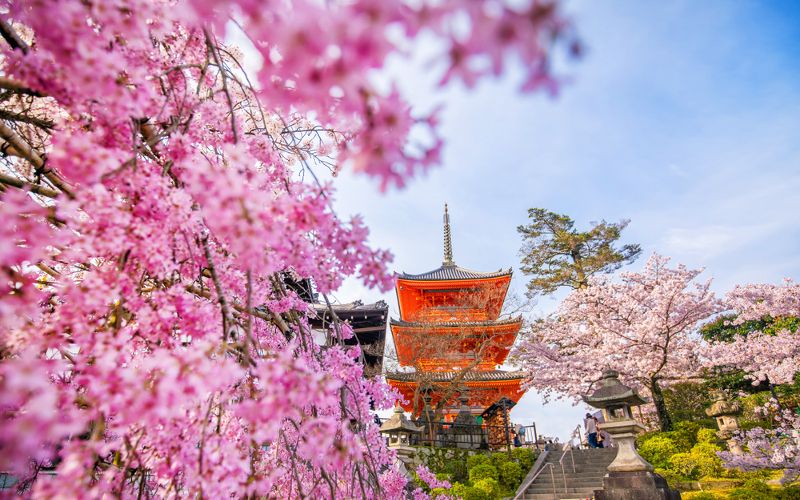Kyoto, located in the central part of the island of Honshu, is considered by many as Japan’s most beautiful city. Kyoto was the Japanese capital until the government was moved to Tokyo in 1868.
However, Kyoto is still Japan’s religious center with over 1000 Buddhist temples. Kyoto is home to some of Japan’s most iconic landmarks, with some of the most exquisite gardens, temples, and masterpieces you will ever see.
Discover Kyoto with the help of our guides. From getting around the city, where to eat, and what to see and do, our guides tell you everything you need to know.
Table of Contents
Top attractions in Kyoto
As one of Japan’s largest cities and a top tourist destination, there is plenty to see and do in Kyoto.
To help you decide what to visit during your time in Kyoto, have a look at our detailed guides to some of the city’s best attractions.
The Arashiyama bamboo grove, Nijo Castle, and the thousand red torii gates of the Fushimi Inari Shrine are just some of the highlights.
Getting around Kyoto
Kyoto has an excellent public transport system: the city has efficient rail and bus networks. Getting around Kyoto and the surrounding areas is easy with your Japan Rail Pass.
You’ll usually be able to choose from several options to get you from A to B in Kyoto. To save time once you arrive in the city, it’s a good idea to plan transport in advance.
Our guides to trains, buses and other modes of transport will help you prepare for your visit.
Main train stations in Kyoto
Kyoto Station is a main transportation hub in western Japan. It houses 2 separate stations: JR Kyoto Station and Kintetsu Kyoto Station. The impressive glass and steel building was designed by an award-winning architect and is home to many shops and restaurants.
There are other stations that you may wish to use during your stay. Check out our guides to find out more about train stations in Kyoto and help you plan your journeys.
Itineraries and nearby attractions
To get the most out of your stay in Kyoto, it’s important to have an itinerary. We’ve put together several options depending on how long you will stay in the city and which attractions you’re interested in seeing.
Using our itineraries, you can make the most of every minute of your time in Kyoto. Don’t miss out on any of the best sites, and enjoy some of the finest cuisine the city has to offer.
Day trips and nearby destinations
While there’s lots to see and do in Kyoto city center, you might also want to explore the surrounding areas. There are many interesting nearby towns that you can visit on a day trip to Kyoto.
Here you’ll find guides to some of the most popular places close to Kyoto and how to get there. If you’re spending a few days in the city, these are great options to see a bit more of Japan during your vacation.
